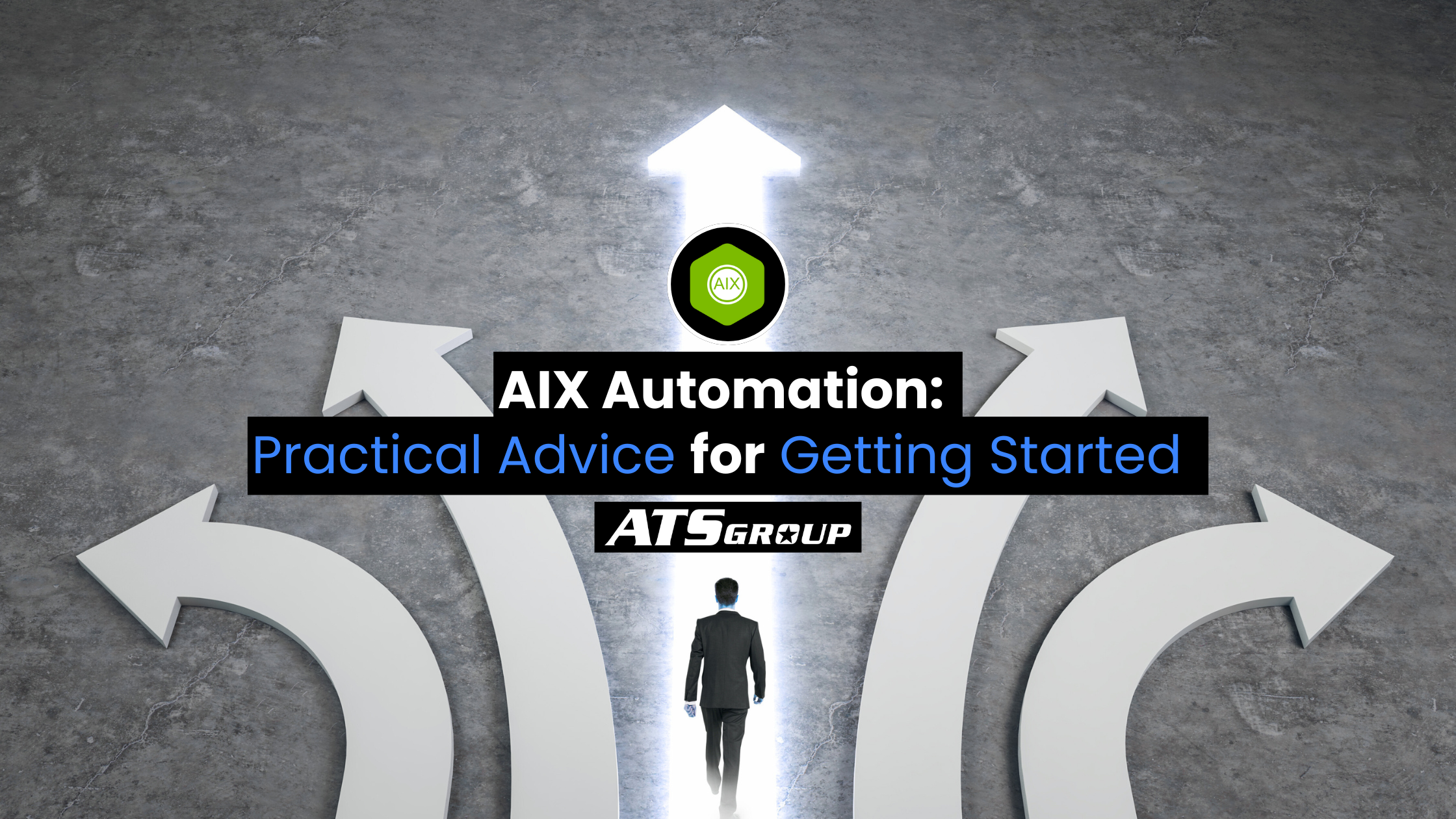AIX automation doesn’t require an overhaul or a dedicated DevOps team. Some of the most effective efforts start small with a single, repeatable workflow that’s easy to define and painful to ignore. Think full filesystem expansion, restarting failed services, or enforcing network tunables.
As your team gains experience, automation naturally grows into broader, strategic initiatives. This post concludes our series on automating AIX operations with Ansible and Zabbix. If you missed earlier installments, explore how to automate filesystem expansion, restore network performance, and reconfigure Fibre Channel adapters using the same automation stack.
Here, we’ll summarize the lessons learned from real AIX environments and provide practical advice to help you launch or scale your own automation journey.
Start Small with AIX Automation, Start Smart
One of the most common missteps in AIX automation is trying to automate too much, too soon. A better approach is to start with a low-risk, high-impact task that is performed frequently and has clear inputs and outputs.
When identifying your first candidate for automation, ask:
- Does this task take up regular time for the team?
- Is it consistent enough to be codified in a playbook?
- Would automation reduce risk or improve response time?
Ideal examples include:
- Filesystem expansion
- Network tunable enforcement
- Restarting failed services
- Sending alerts when thresholds are exceeded
Small, targeted automations demonstrate quick wins to leadership, ease your team into the process, and create momentum for larger projects.
Real-Time Monitoring Triggers AIX Automation
AIX Automation only adds value if it knows when to act. That’s where observability comes in.
Zabbix is a flexible, open-source monitoring platform that integrates cleanly with Event-Driven Ansible (EDA). With Zabbix, you can monitor for drift, hardware failure, or application faults, then trigger automation that responds before anyone files a ticket.
For deeper visibility across your AIX infrastructure, Galileo offers powerful monitoring, optimization, and strategic management for modern and legacy AIX environments, with advanced data collection and alerting purpose-built for AIX. It’s an ideal companion for teams standardizing on automation and looking to reduce monitoring overhead.
Invest in Structure Early
Your first playbook won’t be your last. As your AIX automation efforts expand, complexity grows. Plan for that from the start:
- Use Git or other version control from day one
- Define naming conventions for playbooks and templates
- Isolate test, staging, and production environments
- Document every playbook’s function, scope, and expected outcome
Without structure, automation becomes a brittle collection of one-off scripts. With it, it becomes a maintainable, scalable framework that can support enterprise growth.
Expect Resistance and Build Trust
Automating AIX often sparks skepticism. Some engineers see it as risky. Others worry about job security.
That mindset shifts when automation is framed as a force multiplier, eliminating repetitive work, reducing alert fatigue, and freeing engineers for higher-value projects.
Earn buy-in by building automation that includes:
- Dry-run options to preview actions before execution
- Detailed logging for every automated change
- Guardrails and safety checks for critical systems
- Optional approvals to retain human oversight
The more your team can see and control what automation does—and doesn’t do—the more likely they are to embrace it.
Avoid These Common Pitfalls
A few recurring mistakes often derail otherwise good automation efforts:
- No monitoring integration: Without a trigger, automation sits idle.
- Hardcoded values: Use variables and defaults to make playbooks flexible.
- No rollback plans: Always have a path to reverse changes when needed.
- Treating automation like scripts: Invest in modular, role-based playbooks.
- Ignoring documentation: Future you (and your teammates) will thank you.
Avoiding these pitfalls lays the groundwork for scaling automation across your AIX environment.
AIX Automation Use Cases You Can Deploy Now
These real-world examples demonstrate how AIX teams are already using Ansible and EDA:
- Filesystem auto-growth: Expand filesystems when usage exceeds 95%
- Network restoration: Reset TCP tunables when drift is detected
- FC adapter reconfiguration: Standardize
num_cmd_elemsacross systems - Service restart workflows: Restart failed services with notifications
- Patch compliance: Identify systems missing required TLs or SPs
Each use case begins with a monitoring trigger and ends with a predictable, automated action, building confidence in the process and freeing teams from manual intervention.
Expand Your AIX Automation Strategy
Once you’ve proven the value of automation, you can begin connecting these workflows into an enterprise-wide framework.
As your AIX automation matures, consider:
- Integrating with ITSM platforms like ServiceNow for ticket generation
- Enforcing configuration standards across multiple environments
- Sharing playbooks across storage, networking, and security teams
- Adding human approvals and escalation logic where needed
This is where automation shifts from a convenience to a core part of your IT operations.
Make AIX Automation a Strategic Advantage
Modernizing AIX operations doesn’t require a massive overhaul—it starts by identifying high-value tasks and applying automation where it matters most. With tools like Zabbix Red Hat AAP, infrastructure teams can shift from reactive firefighting to proactive, policy-driven operations.
Our series has explored how to automate critical workflows—filesystem expansion, network performance restoration, Fibre Channel adapter management—and shared lessons from real environments. This final installment brings those insights together: monitor, trigger, remediate, repeat. When implemented thoughtfully, with guardrails, structure, and transparency, AIX automation becomes a force multiplier, extending the reach of your team and strengthening the reliability of your environment.
If you’re ready to move from isolated scripts to a scalable automation framework, our AIX and automation specialists are here to help.
👉 Schedule a strategy session to identify automation opportunities in your environment and build a plan that works for your team.




